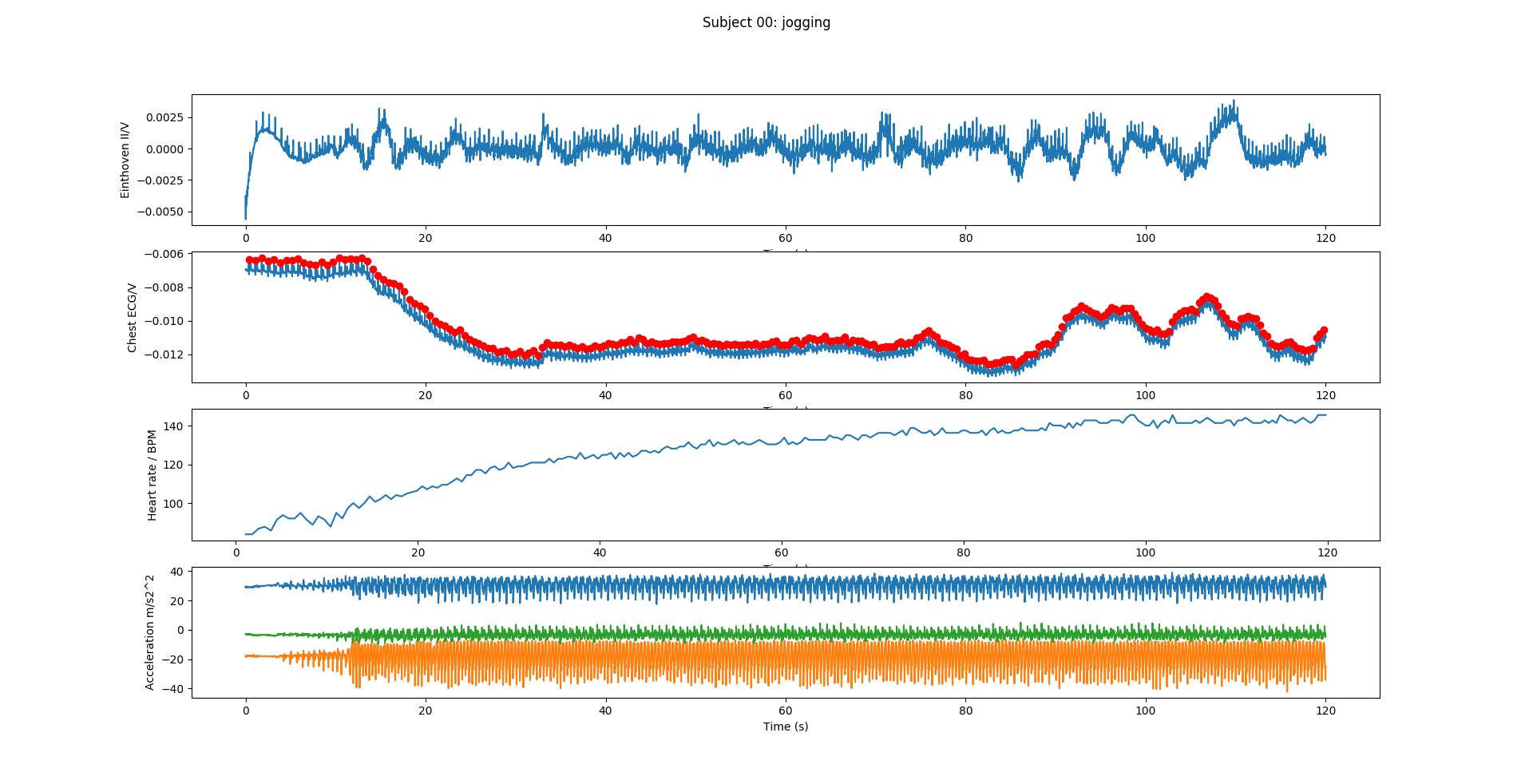High precision ECG Database with annotated QRS complexes
This is a mirror of the ECG GUDB http://researchdata.gla.ac.uk/716/ and provides online access via a python API.
DOI: https://doi.org/10.5281/zenodo.10925419

It contains ECGs from 25 subjects. Each subject was recorded performing 5 different tasks for two minutes:
- sitting
- a maths test on a tablet
- walking on a treadmill
- running on a treadmill
- using a hand bike
The following channels were recorded with two Attys (https://www.attys.tech/) running synchronously:
- Einthoven II and III with standard cables and the amplifier worn around the waist
- Exercise cheststrap ECG which resembles approximtely V2-V1 with the ECG amplifier directly mounted on the strap
- Acceleration in X/Y/Z whith the sensor mounted directly on the chest strap
The cheststrap ECG allowed R peak detection even while jogging at a very high precision (+/- one sample). The sampling rate was 250Hz at a resolution of 24 bits. The database contains the unfiltered, DC-coupled signals as originally recorded. In order to be able to link the ECG artefacts to the behaviour of the subject all but one subject gave permission to be filmed and the videos are also part of the database.
Installation
Simply install via pip or pip3
pip install ecg_gudb_database
pip3 install ecg_gudb_databaseUsage
Check out usage_example.py on github which plots the ECG and the heartrate of one subject.
Module
The module is called ecg_gudb_database:
from ecg_gudb_database import GUDbThe constructor loads the ECG data of one subject/experiment from github:
ecg_class = GUDb(subject_number, experiment)where subject_number is from 0..24 and experiment is 'sitting', 'maths', 'walking', 'hand_bike' or 'jogging'.
The array ecg_class.experiments is an array of all experiments so that one can loop through the different experiments.
Optionally, in case you decide later to download the whole dataset from http://researchdata.gla.ac.uk/716/ then specify the absolute path to the dataset with the optional parameter url without the "file:" specifier:
ecg_class = GUDb(subject_number, experiment, url = "/home/bp1/dataset_dataset_716/experiment_data/")Retrieve the ECG data
The data is available as numpy arrays. The sampling rate is 250Hz for all experiments (ecg_class.fs).
We have recorded Einthoven and from a chest strap.
Einthoven
ecg_class.einthoven_I, ecg_class.einthoven_I_filt
ecg_class.einthoven_II, ecg_class.einthoven_II_filt
ecg_class.einthoven_III, ecg_class.einthoven_III_filtChest strap
ecg_class.cs_V2_V1, ecg_class.cs_V2_V1_filtwhere the filtered versions have 50Hz mains and DC removed.
R peak annotations
The two boolean variables ecg_class.anno_cs_exists and ecg_class.anno_cables_exists
tell the user if annotations exist. If yes they can be obtained.
ecg_class.anno_cs
ecg_class.anno_cablesAccelerometer data
The accelerometer was worn on a standard belt around the subject's waist.
ecg_class.acc_x
ecg_class.acc_y
ecg_class.acc_zVideos and full dataset for offline use
Where the participant has consented, there is a video for each of the tasks. Here is an example:
https://berndporr.github.io/ECG-GUDB/
The video and ECG data have been synchronised so they start and end at the same time. The full dataset with the videos can be requested here: